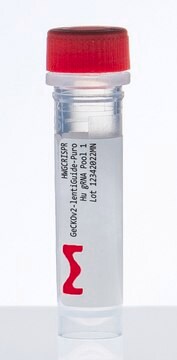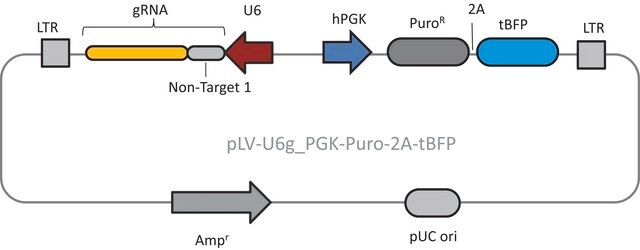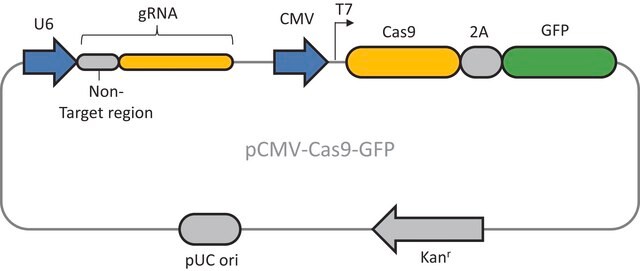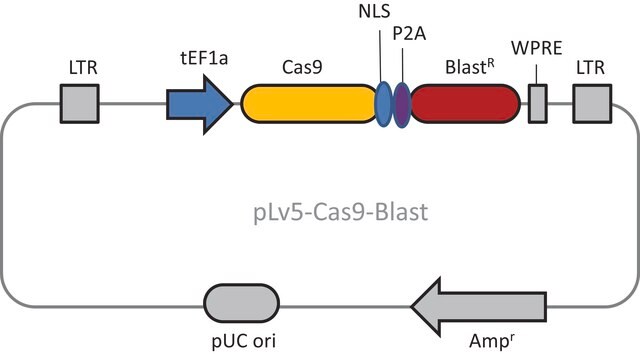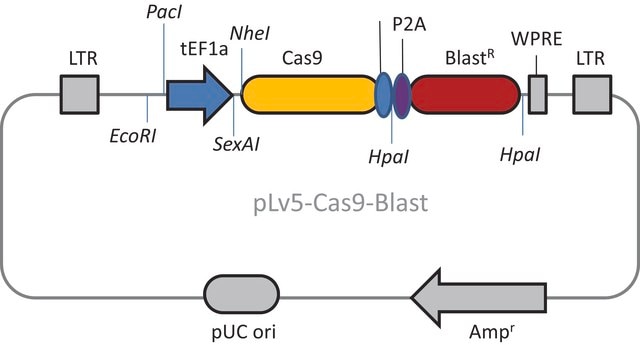SHP002
CRISPR & MISSION® Lentiviral Packaging Mix
Synonym(s):
Lentiviral Packaging Mix
About This Item
Recommended Products
concentration
100 ng/μL (in Tris-EDTA)
Quality Level
application(s)
CRISPR
shipped in
dry ice
storage temp.
−20°C
General description
Lentiviral particles are generated from three main components:
- The packaging vector, which contains the minimal set of lentiviral genes required to generate the virion structural proteins and packaging functions.
- The vesicular stomatitis virus G-protein envelope vector, which provides the heterologous envelope for pseudotyping and allows these lentiviral particles to efficiently deliver the transfer sequence of interest to a wide variety of cell types, including primary and non-dividing cells
- The lentiviral transfer vector, which contains the sequence of interest as well as the cis acting sequences necessary for packaging.
The Lentiviral Packaging Mix contains the first two components; it is designed to be co-transfected along with a compatible lentiviral transfer vector in order to create high-titer pseudo-typed lentiviral particles used for downstream transduction applications. This product is recommended for packaging Lenti CRISPR, Lenti ORF, and Lenti shRNA vectors.
Application
Legal Information
Storage Class
12 - Non Combustible Liquids
wgk_germany
WGK 2
flash_point_f
Not applicable
flash_point_c
Not applicable
Choose from one of the most recent versions:
Certificates of Analysis (COA)
Sorry, we don't have COAs for this product available online at this time.
If you need assistance, please contact Customer Support.
Already Own This Product?
Find documentation for the products that you have recently purchased in the Document Library.
Customers Also Viewed
Articles
Our lentiviral vector systems are developed with enhanced safety features. Numerous precautions are in place in the design of our lentiviruses to prevent replication. Good handling practices are a must.
Get tips for handling lentiviruses, optimizing experiment setup, titering lentivirus particles, and selecting helpful products for transduction.
Protocols
FACS (Fluorescence-Activated Cell Sorting) provides a method for sorting a mixed population of cells into two or more groups, one cell at a time, based on the specific light scattering and fluorescence of each cell. This method provides fast, objective, and quantitative recording of fluorescent signals from individual cells.
Our team of scientists has experience in all areas of research including Life Science, Material Science, Chemical Synthesis, Chromatography, Analytical and many others.
Contact Technical Service
